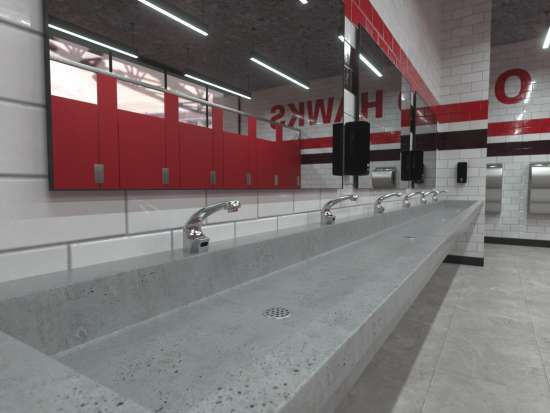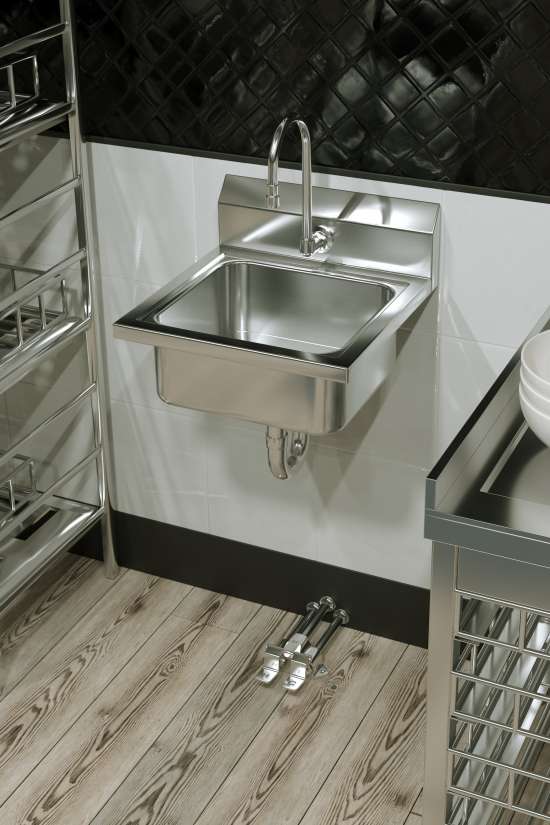Preparing for the long haul: A Q&A on the present and future of plumbing in public facilities
Articles

Industries of every kind have responded to the urgent needs brought on by the coronavirus by making facility plumbing changes to boost hygiene and increase safety. Many months into the pandemic, what lessons have been learned and what does the future hold?
We asked T&S product marketing manager David Scelsi about what he's seeing in the industry and what he anticipates for the months and years to come.
1. What are the most common ways you've seen facilities change over the past year as they adapt to COVID and the unique demands and expectations the pandemic has brought?
By far the biggest trend we've seen is facilities gravitating to touch-free devices. While this mainly has meant replacing manual devices with sensor devices, we have also noticed an increase in placement of knee and foot pedal valves, which combine the simplicity of manual faucets with the benefits of hands-free operation.
We've also seen requests for portable handwashing stations at schools, outdoor venues, theme parks - lots of places where people want to be able to wash their hands more frequently (and not always in a restroom) but where access to water is limited.
2. What challenges are facilities facing in making the adjustments they want or believe they should make?
Making handwashing readily available to customers without the need to touch a faucet or fixture is a big one. People want to touch as little as possible in public environments, particularly restrooms, and facilities know they need to put their workers, customers and guests at ease.
Budgeting for these improvements is also a challenge for many facilities, especially considering that foot traffic in many public facilities has decreased due to COVID. But we have seen that many companies are still investing in the future by replacing manual fixtures with touch-free devices. It goes a long way in helping them demonstrate a commitment to creating a safe, hygienic environment, one where customers feel comfortable returning.

3. What are some options for addressing those challenges to help things go smoother?
Get educated on what resources are available in the marketplace to make customer experiences as safe as possible. For a public restroom, the best option would be to replace manual devices with sensor-operated ones. These can include faucets, flush valves, soap dispensers and hand-drying devices.
While this is the most expensive route to go, studies have shown that end users prefer sensor devices over manually operated ones.
The next best option would be to replace manual devices with touch-free knee or foot pedal valves. While these are less common in public restrooms, they are potentially a lower-cost method for going hands-free. They could also be good alternatives for back-of-house applications to boost hygiene for employees.

The final option would be to replace manual handles with antimicrobial handles, which have a special coating that reduces the amount of microbes present.
Another consideration for public facilities is increasing the number of available handwash stations. To meet this need, T&S has introduced a line of portable handwashing stations that can easily be installed - in areas with and without water access - to increase handwashing opportunities.
4. What changes do you anticipate being permanent even beyond the pandemic? How might facilities look or function differently from now on?
We believe the shift to sensor is here to stay. Facility owners and operators know they must provide a safe, sanitary environment for customers and employees, and planning for this changing reality will take more precedence.
End users are keenly aware of the impact a disease can have on their health and livelihood and will expect facilities to create a safe environment.
In the short-term we expect to see increased demand for portable handwashing stations. While these could become permanent depending on the user experience, these stations may end up being a short-term solution to get a facility through the COVID pandemic and then retired once things return to normal.
Employers are also looking to support employees with safer environments, providing more handwashing access for workers as well. In restaurants, for instance, designers are introducing stand-alone cooking stations equipped with everything cooks need, from small refrigerators to individual handwashing stations. This setup promotes safety by limiting the regular crossing of paths that typically happens in busy kitchens.







